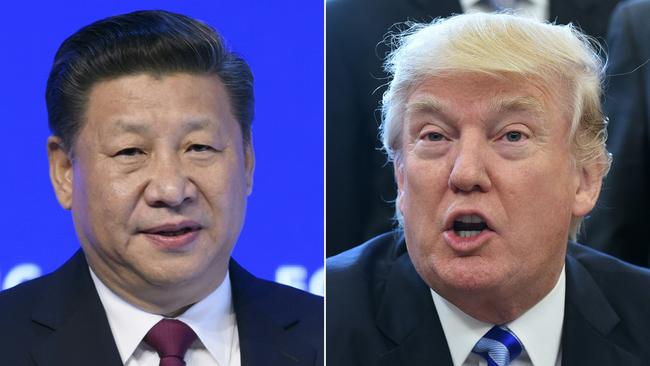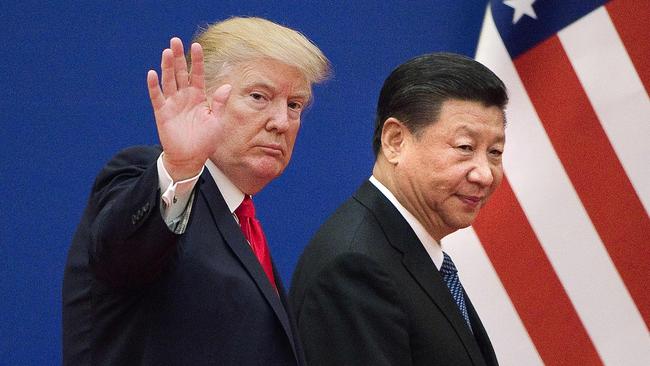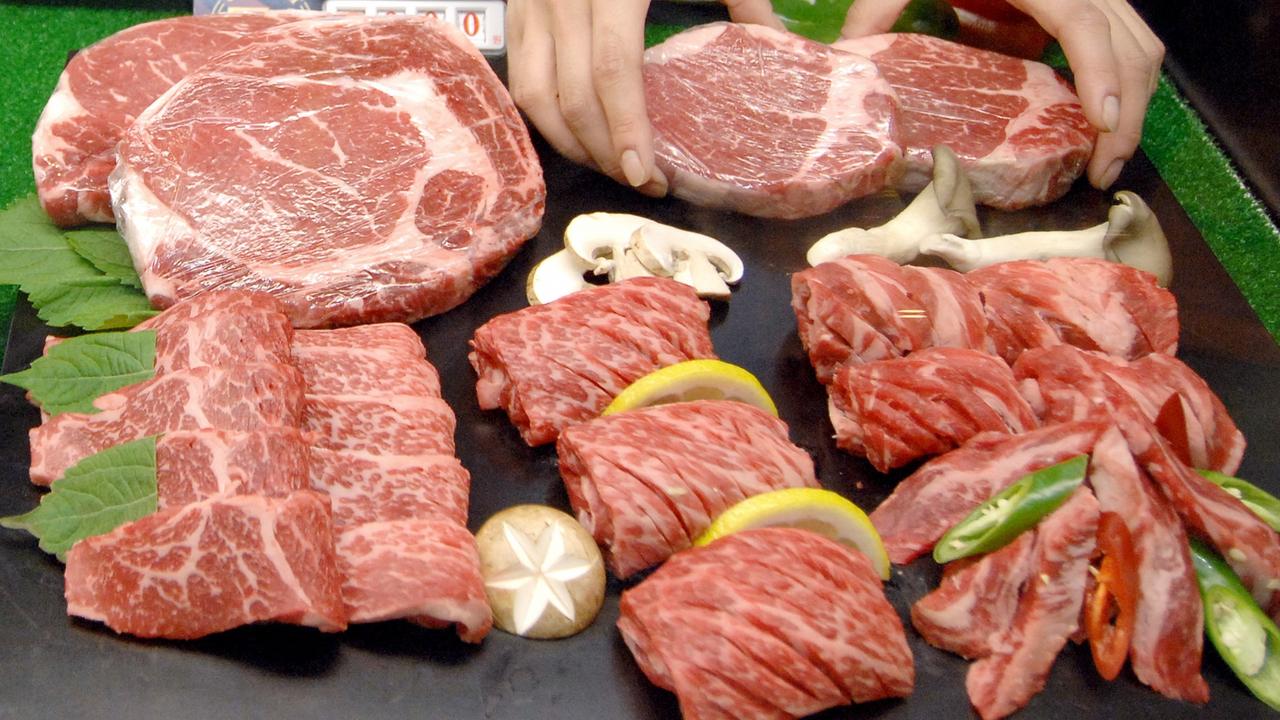China swiftly retaliates against Donald Trump’s new tariffs
China announces tariffs on another $US60bn worth of US imports in retaliation for Donald Trump’s latest round of tariffs.

China will impose tariffs on another $US60 billion worth of imported goods from the US including a 10 per cent tariff on LNG in retaliation for Donald Trump’s latest round of tariffs on $US200bn worth of Chinese goods.
The move comes as the The China Daily has warned that the Trump administration would be making a “serious mistake” if it attempted to force China to make major trade concessions through escalating tariffs.
China’s Ministry of Commerce has announced plans to impose a 10 per cent tariff on some 3571 goods from the US including LNG and five per cent tariffs on another 1636 US products in response to the US move.
While the new Chinese tariffs on imports of LNG from the US were lower than the 25 per cent levy suggested a few weeks ago, they could still advantage Australian suppliers such as Woodside.
The new Chinese tariffs on US imports are due to come into effect on September 24. At the moment LNG imports into China do not attract any tariffs.
China’s foreign affairs spokesman Geng Shuang said that Beijing was being forced to take retaliatory action to “safeguard its legitimate and legal rights and interests and uphold the global free trade order.”
He said the latest moves by President Trump had bought “new uncertainties” to the proposed talks between Chinese officials and the US in Washington next week
“We hope the US will realise the negative consequences of its actions and take credible means to correct them in a timely manner,” he said.
He said China had been stressing the importance of “dialogue and consultation on the basis of equality, good faith and mutual respect” as the only viable way to resolve the trade issues.
But he said “everything the US does for now gives no impression of sincerity or goodwill.”
The China Daily said President Trump would find his protectionist measures “backfiring” on him and harming US industries and the American people.
It said this week’s move by President Trump showed that the US was using “unilateral policies in an attempt to force China to accept its terms” and change its economic policies instead of engaging in talks on an equal basis.
The newspaper said that China had faced economic uncertainties due to external shocks in the past including the Asian financial crisis of 1997-98 and the global financial crisis of 2008-9 which had hurt its economic growth.
But it said the Chinese economy had an “inherent resilience” and the country would always find the proper solutions to put its economy on track.
“The trade conflict will not force China to succumb to US pressure,” it said.
“Instead, given its economic resilience, it will squarely face those challenges, find the right solutions and emerge stronger.”
China is unable to retaliate against the US in the tariff war to the same extent as Mr Trump’s proposed $US200 billion tariffs as it only imports around $US130 billion worth of goods from the US.
But if President Trump persists with his threats to impose tariffs on another $US267 billion worth of goods from China — which would mean tariffs on almost all China imports — China could be forced to look at retaliatory action again major US companies operating in China.
Both sides have already imposed tariffs of $US50bn on each other’s goods but this week’s move by President Trump represents a major escalation of the trade war and signals that both sides are in for a long and bitter dispute.
China had been prepared to send one of its top officials, vice premier Liu He, to Washington next week for talks but that visit is now in doubt due to Mr Trump’s aggressive action this week.
Calculations are now being made on the impact of the trade war on the Chinese economy.
Fang Xinghai, vice chairman of China’s Securities Regulatory Commission, said that the latest US actions could slice around 0.7 per cent off China’s GDP. But the full impact will depend on how much worse the situation gets.

RBA warns over fallout
The Reserve Bank has warned that the trade war between the US and China is emerging as a threat to the economy.
A defiant US President said the new tariffs were needed because Chinese trade practices “plainly constitute a grave threat to the long-term health and prosperity of the United States economy”.
Accounting firm KPMG suggested losses to the Australian economy from the new tariffs would reach about $2bn in the first year, rising to a maximum of about $5bn, or 0.3 per cent of GDP, by the early 2020s as commodity prices and export volumes suffered. Australia has greater dependence on the Chinese market than any other advanced country, with the latest trade figures showing China takes 36 per cent of goods exported, while it is also the largest market for Australian services, particularly education and tourism. Australia has not had such a heavy dependence on a single market since the fading of the British Empire after World War II.
Trade Minister Simon Birmingham described the US action as a “concerning development” and indicated both the US and China had a responsibility to end the dispute. “We urge all parties to step back from further escalating tariffs and to tackle trade-distorting subsidies or other issues,” Senator Birmingham said.
Most of Australia’s commodity exports to China are destined for its construction and power industries, which mainly service its domestic market, so they will suffer to the extent that China’s economy slows as a result of the limits on its exports.
The minutes of the Reserve Bank’s September board meeting, released yesterday, noted that uncertainty about trade policy was already bringing volatility to markets for some export commodities. The minutes said board members believed “there were still significant tensions around global trade policy and that this represented a material risk to the outlook”.
Mr Trump said the US would levy tariffs of 10 per cent on a range of about 5700 imported goods from China from September 24, warning that this would rise to a punitive 25 per cent by the end of the year if no deal was concluded. Affected goods range from rattan mats to burglar alarms and bicycles.
Mr Trump said if Beijing retaliated, he would unleash a new tariffs barrage at his trade rival. “If China takes retaliatory action against our farmers or other industries, we will immediately pursue … tariffs on approximately $US267bn of additional imports,” the President said.
The new US tariffs on $US200bn worth of goods comes on top of a wave of tariffs in July on $US50bn of Chinese imports.
The new tariffs are set to take effect days before a scheduled visit to Washington by Chinese Vice-Premier Liu He, a visit arranged to discuss ways of resolving the escalating trade war. A statement from China’s Commerce Ministry yesterday cast doubt over whether the talks would proceed.
It said the move had “brought new uncertainty to the bilateral negotiations” and hinted at retaliation. The ministry did not provide detail on the scope of retaliatory measures. Its officials are believed to be examining what would be the most effective measures to take.
The Australian sharemarket was down following the US administration’s move, but Asian markets ended the day higher.
Stephen Kirchner, trade program director for Sydney University’s US Studies Centre, said the short-term impact on the Australian economy would be dictated by the level of financial market reaction.
“The main impact will be through a slowdown in world trade, and the net impact of that on the Australian economy will be negative,” he said.
KPMG’s analysis shows that if the US goes ahead with raising tariffs on Chinese goods to 25 per cent from January 1, it would cut the size of Australia’s economy by 0.5 per cent over the next four years and cost the economy $58bn over a decade.
KPMG chief economist Brendan Rynne said this analysis did not include the possibility of a “disorderly” reaction by world financial markets, which would worsen the slowdown considerably. KPMG said the biggest concern was that other nations might start building tariff walls, raising the possibility of a global recession.
“These actions by the world’s second-biggest trader against the world’s largest trader are outside the rules of the WTO,” Mr Rynne said.
Trade expert Peter Drysdale said Australia needed to take a strong stand, and “make it unequivocally clear that we don’t endorse these actions because they’re contrary to the rules of the WTO”.
Professor Drysdale said Australia also needed to work with partners in the region to strengthen commitments to trade liberalisation, with speedy completion of a high-quality Regional Comprehensive Economic Partnership trade agreement that would include China and other major Asian nations but not the US.





